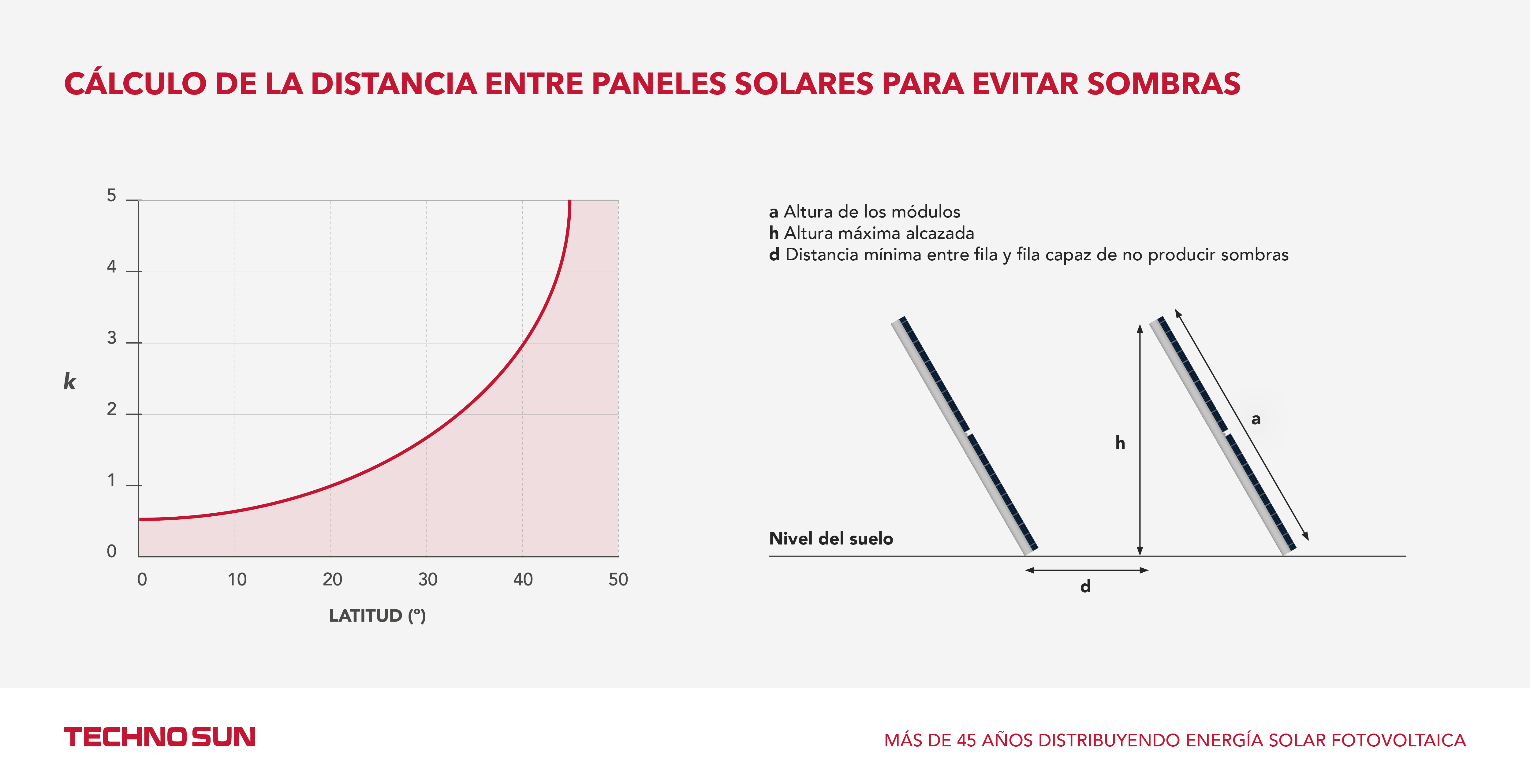Shadows between solar panels
Shading is one of the great enemies of photovoltaic installations. Not only can they cause a drop in performance and energy production, but they can also cause irreversible damage, as we have already seen in the publication: Shading in photovoltaic systems.
In an installation with a large number of solar panelsIn some solar farms, these will be placed in long rows, which causes the danger of shading each other, it can also happen when in large warehouses a large roof is used where a large number of panels are placed. Another common situation in installations in the city, other adjacent buildings produce shadows on the panels. photovoltaic modules.
Although shadows should be avoided whenever possible, each installation has its own particular circumstances and this may not always be possible. That is why it is important to have a monitoring system to make sure that everything is working properly.
Calculate minimum distance between rows to avoid shadowing
Next we will see how we can calculate the minimum distance we have to maintain between rows of solar panels to avoid shading. To do this, we must take into account the following values.
When we know the values of the height of the modules (a) and the latitude where the installation will be, we can know the k value. With this value we can consult the following table where the height of the module or modules is represented, and on the other hand, the angle of inclination of the set. Crossing both values we will be able to know the value of the maximum height reached (h).
 Knowing all these values, it will only be necessary to apply the following formula to determine the minimum distance between rows capable of not producing shadows (d).
Knowing all these values, it will only be necessary to apply the following formula to determine the minimum distance between rows capable of not producing shadows (d).
d = k · h
Example of calculation of minimum distance between rows to avoid shading
For the example we will take as a reference measurement the photovoltaic panels of Trina Solar Vertex 540W and of Seraphim Eclipse The first is 238.4 cm high by 109.6 cm wide, while the second is 162.3 cm high by 104.8 cm wide.
Let us suppose that we place photovoltaic modules in rows being the latitude of the place where we make the installation 30º. For this latitude, and as can be seen in the curve of the first image, the value of k will be equal to 1.9.
With the height (a) of the modules, to which we will add 20 cm, which represents the height of the leg of the structure, and knowing the inclination of the modules, which in this case we will set at 50º to take advantage of the irradiation in winter, we can check the value of h in the table of the second image.
For Vertex 540W modules with a total rounded height of 2.6 m, the h-value will be approximately 1.99, while for Eclipse 310W modules with a total rounded height of 1.8 m, the h-value will be 1.38.
Finally, having all the values, we apply the formula: d = k · h
Vertex 540W: d = 1,9 · 1,99 | d = 3,781 meters
Eclipse 310W: d = 1,9 · 1.38 | d = 2,622 meters
As can be seen, the larger the module size, the more space we will have to leave between rows, which will require a good study of the terrain to optimize the space to the maximum, it may be more profitable to use smaller panels that need less space between rows and thanks to the space gained, add more rows with more panels, thus increasing the final power generated.

Calculation of power loss due to shading in photovoltaic systems